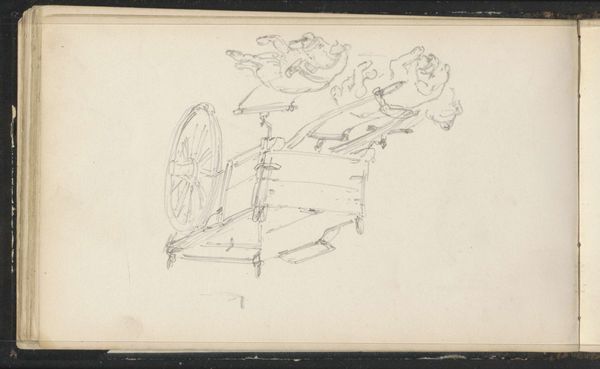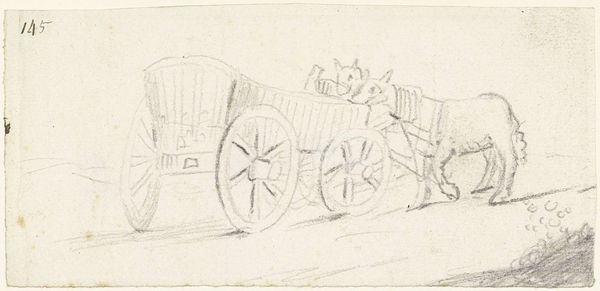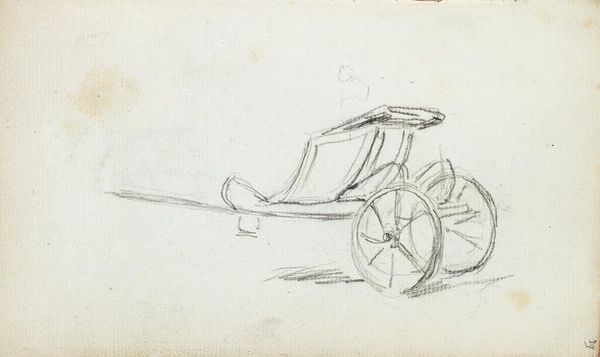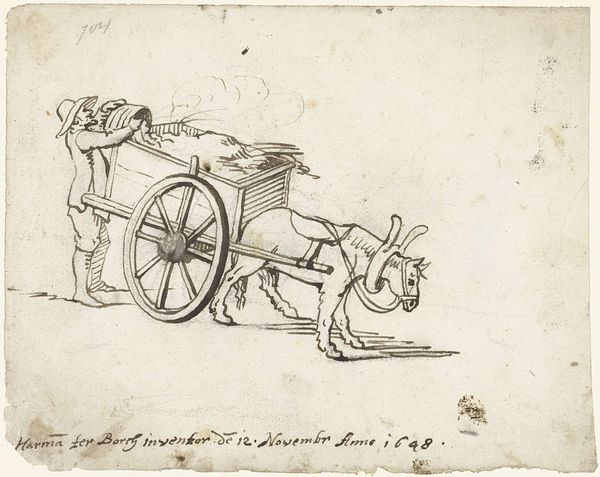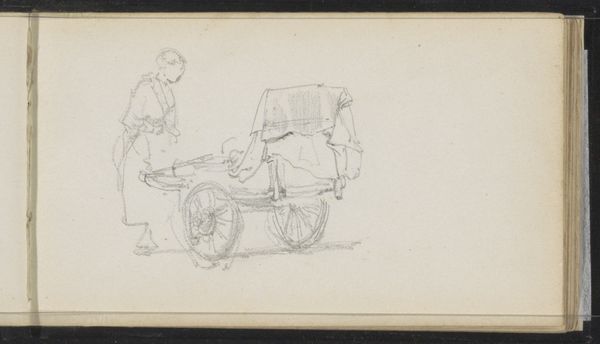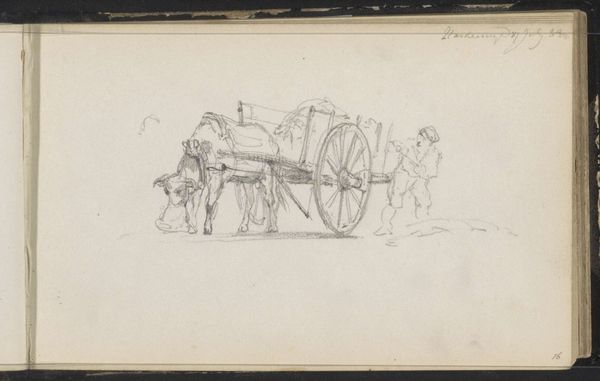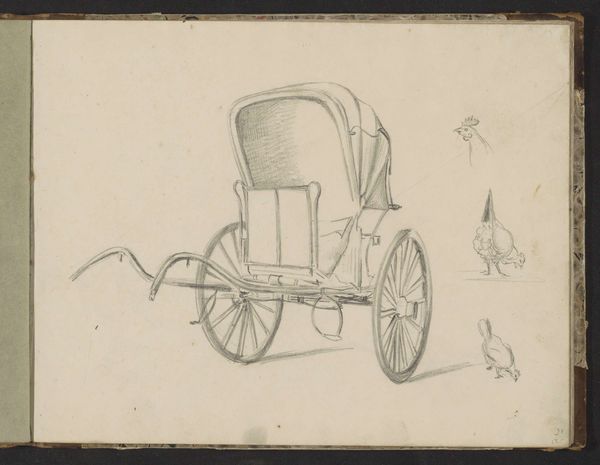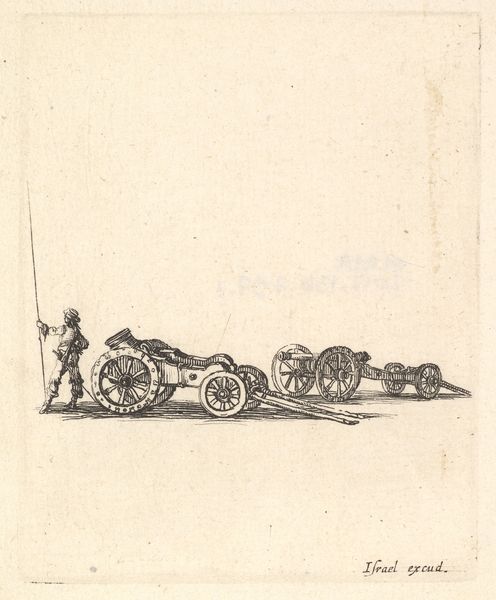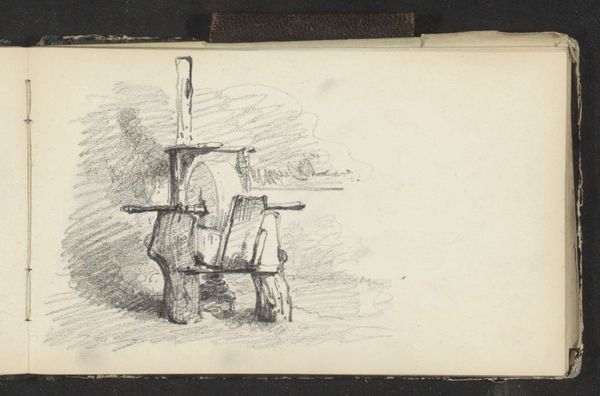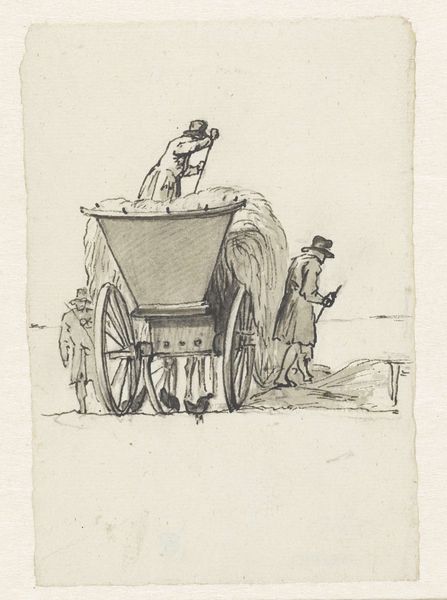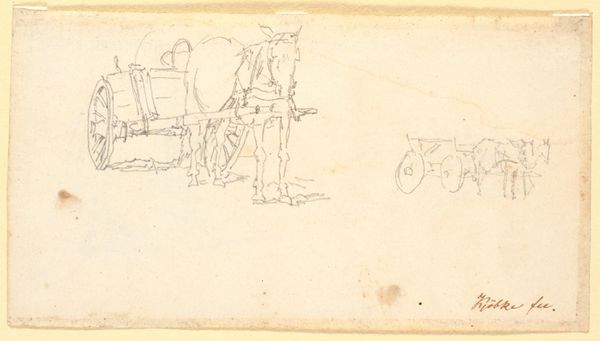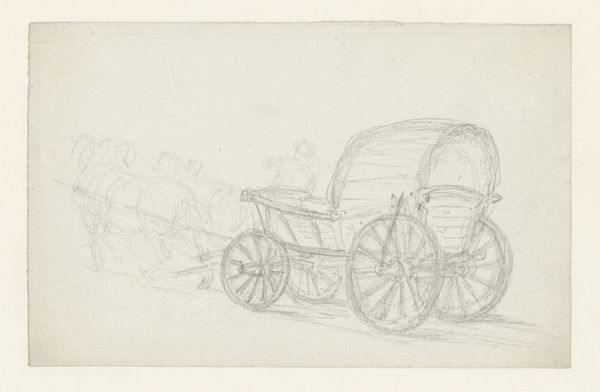
drawing, paper, pencil
#
drawing
#
quirky sketch
#
dog
#
sketch book
#
incomplete sketchy
#
hand drawn type
#
landscape
#
figuration
#
paper
#
personal sketchbook
#
idea generation sketch
#
sketchwork
#
sketch
#
pen-ink sketch
#
pencil
#
sketchbook drawing
#
genre-painting
#
sketchbook art
#
realism
Copyright: Rijks Museum: Open Domain
Editor: This drawing, "Twee honden liggend voor een handkar" which translates to "Two dogs lying in front of a handcart," is from Maria Vos and it is held at the Rijksmuseum. Executed sometime between 1834 and 1906 using pencil on paper. It’s a quick sketch, quite charming, really. What stands out to you in terms of its visual composition? Curator: Indeed, it’s a sketch. Consider how the artist has used line to delineate form, how the marks establish not just the contours but the volume of the subjects—the dogs and the cart. Note the variation in line weight; thicker lines define the foreground elements, creating a sense of depth against the sparser background. What kind of organization can you find when examining shapes? Editor: I see that the cart is more defined than the background, bringing it forward, but the dogs have even less clear lines. What does that imply? Curator: Perhaps an intentional prioritization of elements by the artist. Vos emphasizes the geometry of the cart through structured lines while capturing the organic, relaxed forms of the dogs with a more fluid, almost gestural hand. Have you noticed the tonal qualities in the marks on paper? Editor: It is very light. Almost all one shade, really. Curator: Consider the flatness this lack of tonal variety creates. In terms of art-making, it moves away from illusion and pictorialism. It pushes forward the structural relationships rather than any surface imitation of the external world. How does this kind of composition communicate different aspects? Editor: I hadn't thought of it like that before. Now I see how the flatness really focuses the eye on how the shapes interact. Thanks for showing me new ways to understand what the image can do.
Comments
No comments
Be the first to comment and join the conversation on the ultimate creative platform.
